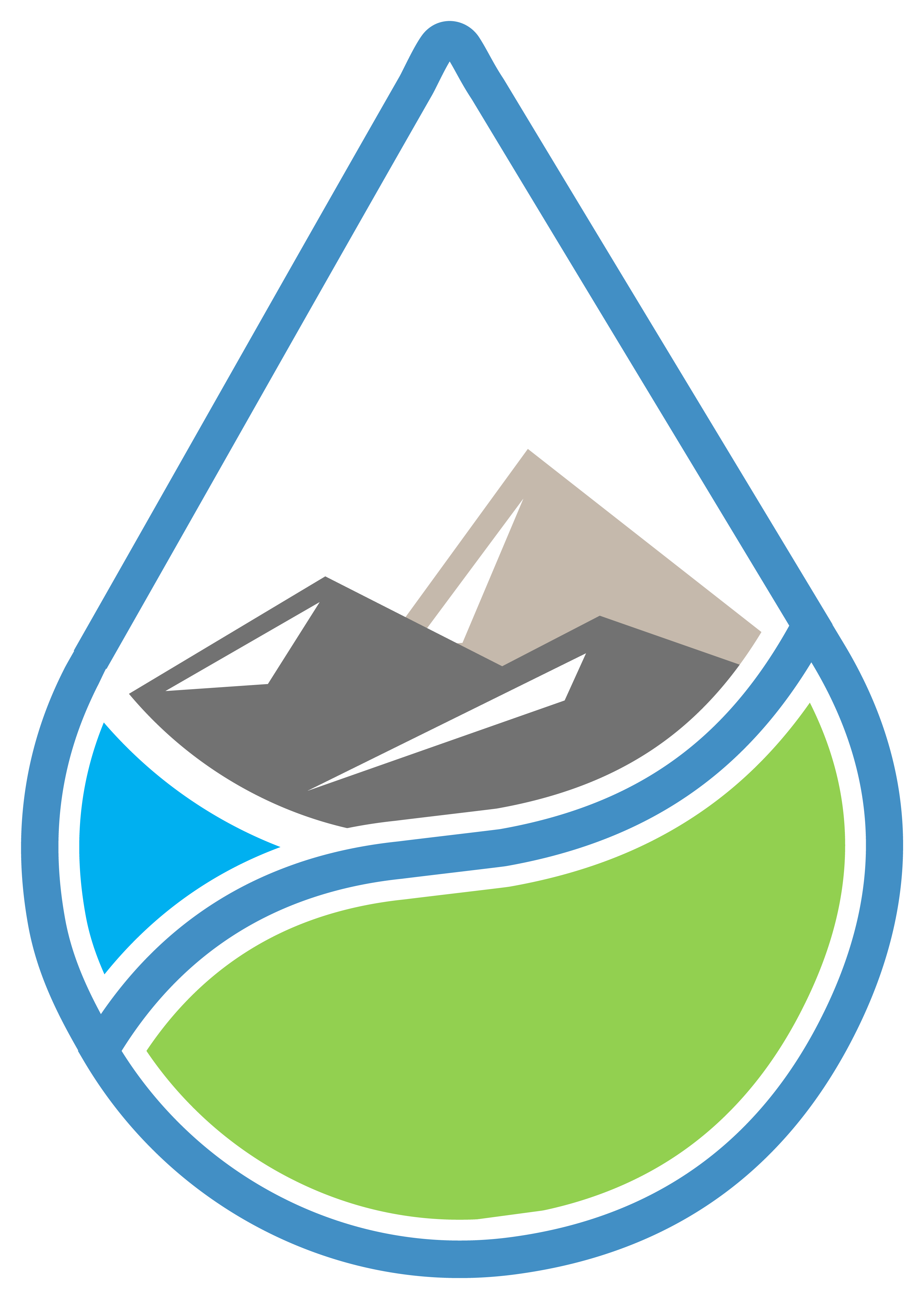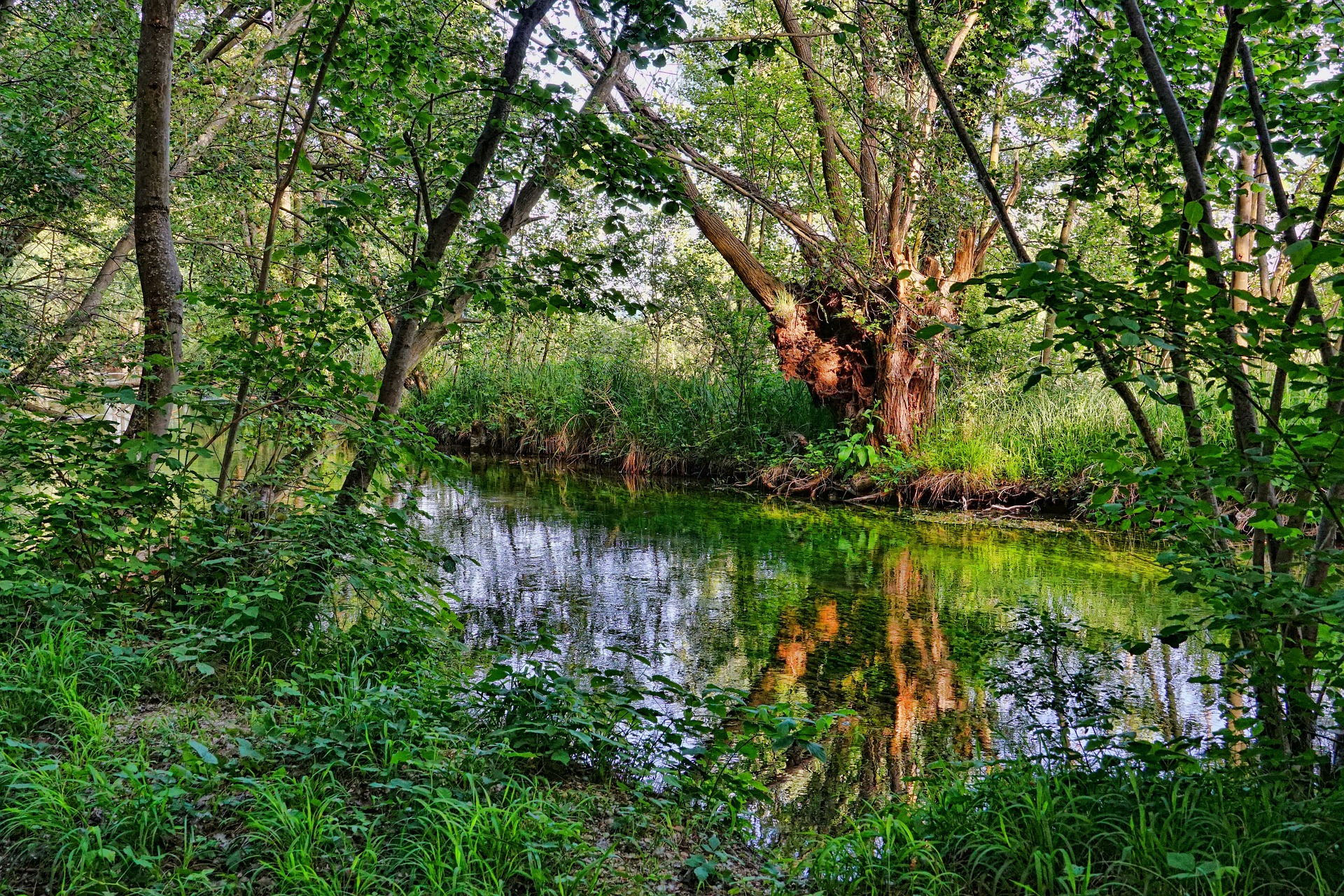Climate change and floods
According to climate projections, as the climate crisis worsens, the global hydrologic cycle will undergo significant changes, including increased flooding risks. While arid regions will become even drier, wet areas will become even wetter. In mid-latitudes, such as central Europe and continental USA, the overall annual precipitation is expected to remain mostly unchanged, but the distribution will shift. This means that summers will become drier, while rainfall events will become more intense, resulting in heightened flooding risks, particularly in areas that may not be adequately prepared to handle such events.

The problem with the current state
To make rivers navigable easier for boats or to gain more arrable land, most major rivers in central Europe were straightened. For instance in the 19th century, the Rhine in its upper valley was straigneted by cutting its curves, reducing the length to 78% of its original. While making the river better navigable, this had major consequences for biodiversity. By straigntening and building levees along its flowpath, former wet riparian areas now lie dry. Flora and fauna adapted to periodical flooding disappeared.

Levees, causing the chanelling of rivers, contain streams during floods. This funneling into one narrow streambet however causes the water flow velocity to increase, leading to riverbed erosion and synchronization of flood peaks (runoff/flood waves from different subcatchments add up to one large wave).
Its unrealistic to dismantel our waterways, however in their tributaries, this weeks topic can have a huge benefit for flood protection and biodiversity:
Stream Restoration
Stream Restoration works by giving rivers more space in landscapes. Cutting Levees and demolishing bank reinforcements lets rivers reclaim their old beds. This gives them the opportunitie to meander, erode new paths and sediment old ones. Its benefits are multidimensional:
🦝🦎🪲 Increased biodiversity: A free river has different flow velocities, different vegetation zones and different sediment areas, thus creating a variety of ecological niches. Some plants depend on periodical flooding as there new nutrient rich sediment deposits, nurishing riparian vegetation. Shaded stream sections are needed by caddisflys. And different flow velocities and sediment types by macrozoobenthos (insect communities living in streams).
🌳🏕️🏖️ Valuable ecosystem services: restored rivers with sandbanks and vegetation also have a great recreational value for people. Here one can fish, relax and enjoy the nature.
🐃🌾🍃Different Agriculture: In some restored rivers, the riparian zones are used to keep water buffalo (e.G. Video/Article by SRF in german)
🌧️💧🌊 Flood Retention: With river restorations giving streams more space, their flood water retention increases. On the one hand, wider streambeds can hold more water. On the other is the flood water slowed by a higher surface roughness due to all the vegetation. This caps flood waves, decreasing their velocity and waterlevel peaks.

Side Effekts
River restoration comes with some side effects that are managable or avoidable
🦟 Mosquitos: In riparian zones, stagnat pools of water can create optimal breeding grounds for mosquitos, possibly carrying diseases. Combined with climate warming,
🏞 Sediment: Often gravel is artificially added during river restoration. However if the river itself erodes lots of sediment during floods while not depositing equal amounts during regular flow, the restoration area is washed out. By measuring and computing the rivers capabilities and adapting the restoration project accordingly, this issue can be easily evaded.

Advertisement on my own behalf
I will be at the European Geoscience Union in Vienna from 24.-28.04.23 presenting my research on how water travels through hillslopes: https://meetingorganizer.copernicus.org/EGU23/EGU23-348.html
If you are also attending and want to have a chat over coffee, message me! Mail
Sources
Bronstert, A. (2003) “Floods and climate change: Interactions and impacts,” Risk Analysis, 23(3), pp. 545–557. Available at: https://doi.org/10.1111/1539-6924.00335.
Wasserbüffel (no date) Wasserbüffel | Naturpark Hohe Mark. Available at: https://naturpark-hohe-mark.de/ziel/wasserbueffel/ (Accessed: April 18, 2023).


Comments are closed